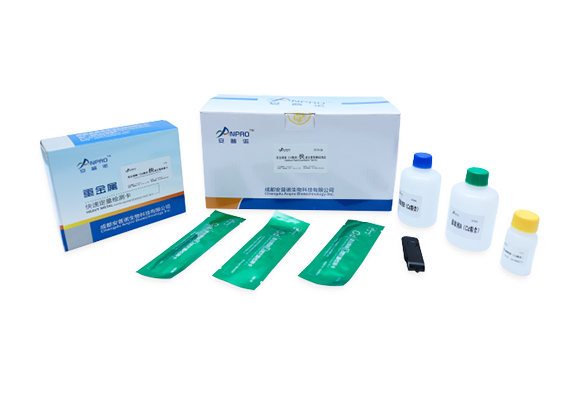
Rapid quantitative testing kits for Cadmium
Determination of cadmium in rice, corn, beans, wheat and other food crops and feeds
Product introduction
Cadmium has toxic effects on multiple systems of human body. FAO and who list Cd2 + as the third priority food pollutant. Heavy metal cadmium pollution mainly exists in grain and food, which is one of the necessary inspection items of grain and food.
1. Kit description
This product is a rapid detection kit for heavy metal cadmium, which is used to quantitatively detect the content of heavy metal cadmium in rice, corn, beans, wheat and other food crops. The national limit of heavy metal cadmium is 0.2mg/kg (PPM).
2. Principle of kit
The sample was crushed, weighed, extracted with extractant, centrifuged and added with sample diluent to chelate heavy metal ions in the supernatant. Add the sample liquid to the sample pad, chromatography along the direction of the kit to the absorbent paper, the heavy metal ion chelate binds with the colloidal gold labeled monoclonal antibody on the colloidal gold binding pad, the unbound colloidal gold labeled monoclonal antibody specifically binds with the whole antigen corresponding to the heavy metal on the detection line t and is partially intercepted, showing a red band. When the gold labeled monoclonal antibody flows through the quality control line C, part of it reacts with Goat anti mouse IgG on the quality control line C and is intercepted, showing a red band. The color of the detection line t is determined by the instrument, and compared with the standard curve preset in the instrument, so as to accurately determine the content of metal ions.
3. Detection range
Quantitative determination of cadmium in rice, corn, beans, wheat and other food crops.
Quantitative detection range: 0-1ppm
4. Technical parameters
Reaction temperature: 37 ℃
Precision (CV): within run < 15%, between run < 20%
5. Kit composition
Test card 20 copies / box
Extractant A 1 bottle / box
Extractant B 1 bottle / box
Reagent C 1 bottle / box
Sample diluent 1 bottle / box
6. Preservation conditions of the kit
The test card should be kept at room temperature, not frozen.
Mobile website

